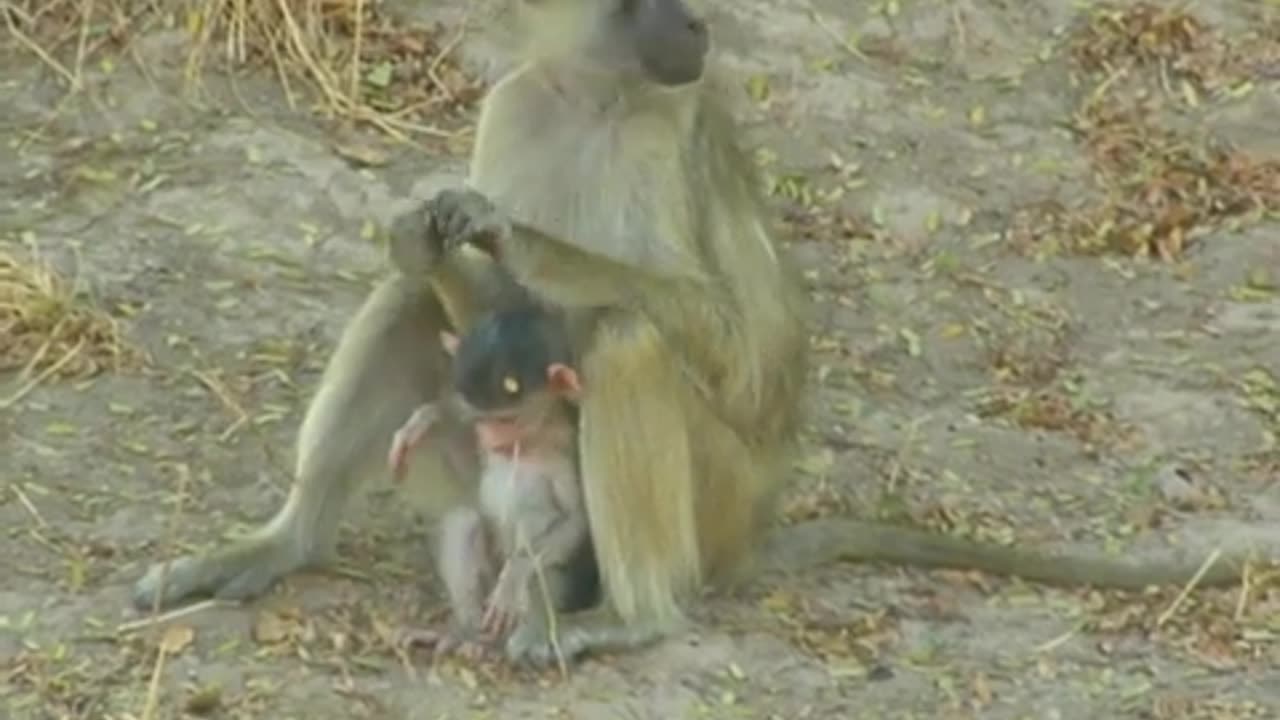Premium Only Content

Baboon Mother With Her Young Baby
Baboon mother with her young baby
Baboons are primates comprising the genus Papio, one of the 23 genera of Old World monkeys, in the family Cercopithecidae. There are six species of baboon: the hamadryas baboon, the Guinea baboon, the olive baboon, the yellow baboon, the Kinda baboon and the chacma baboon. Each species is native to one of six areas of Africa and the hamadryas baboon is also native to part of the Arabian Peninsula.[2] Baboons are among the largest non-hominoid primates and have existed for at least two million years.
What are baboons?
They are some of the world’s largest monkeys. There are five species of the baboon — olive, yellow, chacma, Guinea, and sacred — scattered across various habitat in Africa and Arabia. The olive baboon is the most extensively distributed of the baboon family. The baboon, like other Old World monkeys, does not have a prehensile (gripping) tail — meaning their tails are not used as a hand — but they are still able to climb when necessary. They all have dog-like noses, powerful jaws, sharp canine teeth, and thick fur. Males have a longer mane around the neck, called a ruff.
Females typically give birth after a six-month gestation, usually to a single infant; twin baboons are rare and often do not survive. The young baboon weighs approximately 400 g and has a black epidermis when born.
The females tend to be the primary caretaker of the young, although several females will share the duties for all of their offspring. After about one year, the young animals are weaned. They reach sexual maturity in five to eight years. Baboon males leave their birth group, usually before they reach sexual maturity, whereas females are philopatric and stay in the same group their whole lives.
Baboons in captivity have been known to live up to 45 years, while in the wild their life expectancy is between 20 and 30 years
Enjoy the video? More Animal Videos Here
https://rumble.com/playlists/LfbbQ3K-V2c
-
 LIVE
LIVE
a12cat34dog
9 hours agoGETTING AFTERMATH COMPLETED :: Call of Duty: Black Ops 6 :: ZOMBIES CAMO GRIND w/Bubba {18+}
301 watching -
 8:23:18
8:23:18
NubesALot
12 hours ago $5.12 earnedDark Souls Remastered and party games
27.9K -
 3:03:42
3:03:42
GamersErr0r
23 hours ago $2.14 earnedits not what you think
22.9K1 -
 7:15:50
7:15:50
Phyxicx
9 hours agoRocket League with Friends! - 11/22/2024
17.1K1 -
 7:54:29
7:54:29
STARM1X16
10 hours agoFriday Night Fortnite
14.3K -
 29:51
29:51
Afshin Rattansi's Going Underground
1 day agoJimmy Dore on Ukraine & WW3: Biden Wants a War that Trump CAN’T Stop, ONLY Hope is Putin’s Restraint
72.2K32 -
 3:20:54
3:20:54
Fresh and Fit
11 hours agoExposing WHO Killed JFK w/ Cory Hughes & Tommy Sotomayor
93.2K59 -
 2:41:29
2:41:29
RanchGirlPlays
11 hours ago🔴 Red Dead Redemption: Let's go help De Santa 🤠
7.14K3 -
 1:39:58
1:39:58
Man in America
18 hours agoWHAT?! Trump & the Fed are DISMANTLING the Global Banking Cartel!? w/ Tom Luongo
35.6K39 -
 2:00:29
2:00:29
HELMET FIRE
8 hours agoDEADROP IS BACK!
6.53K2